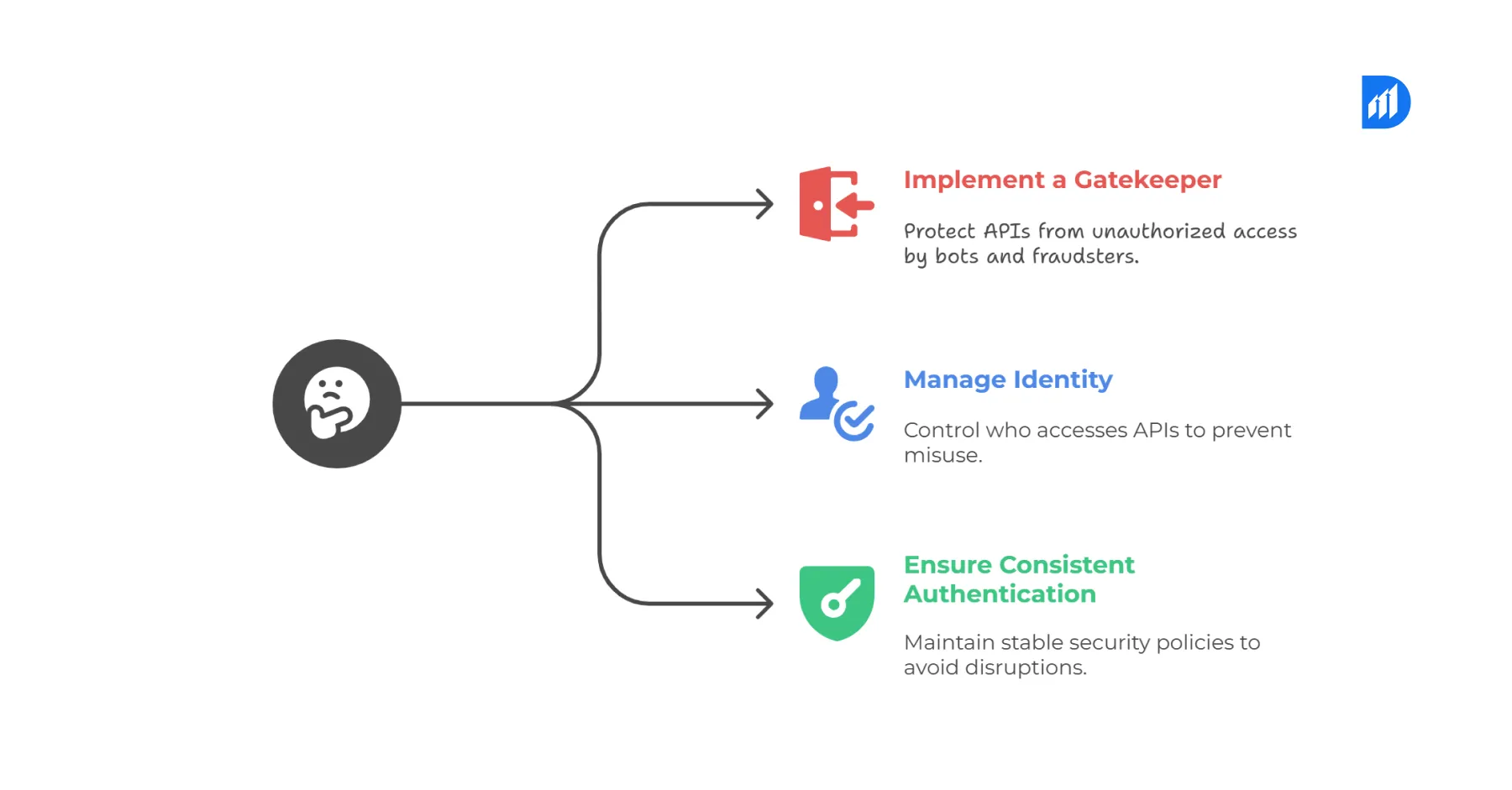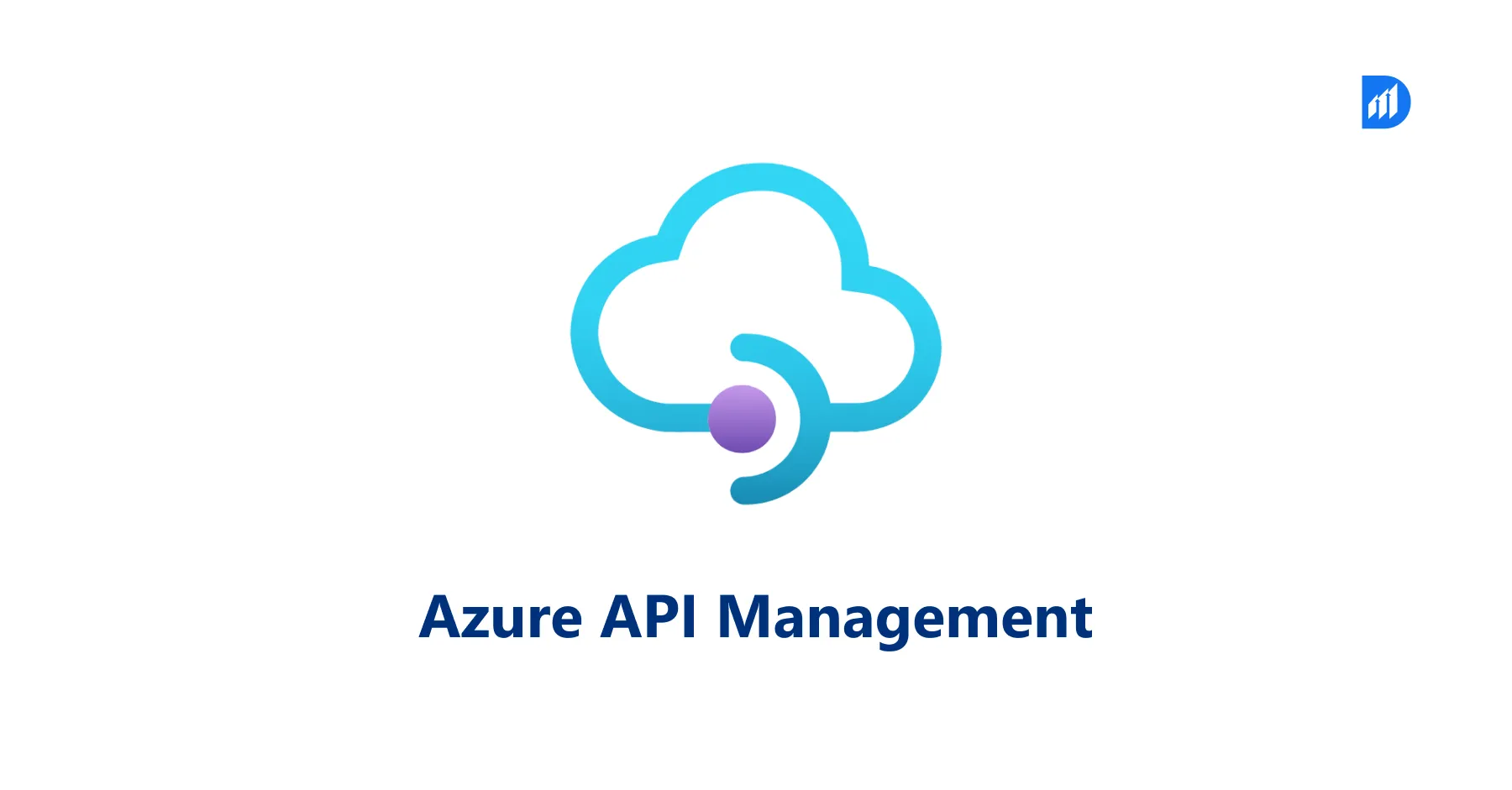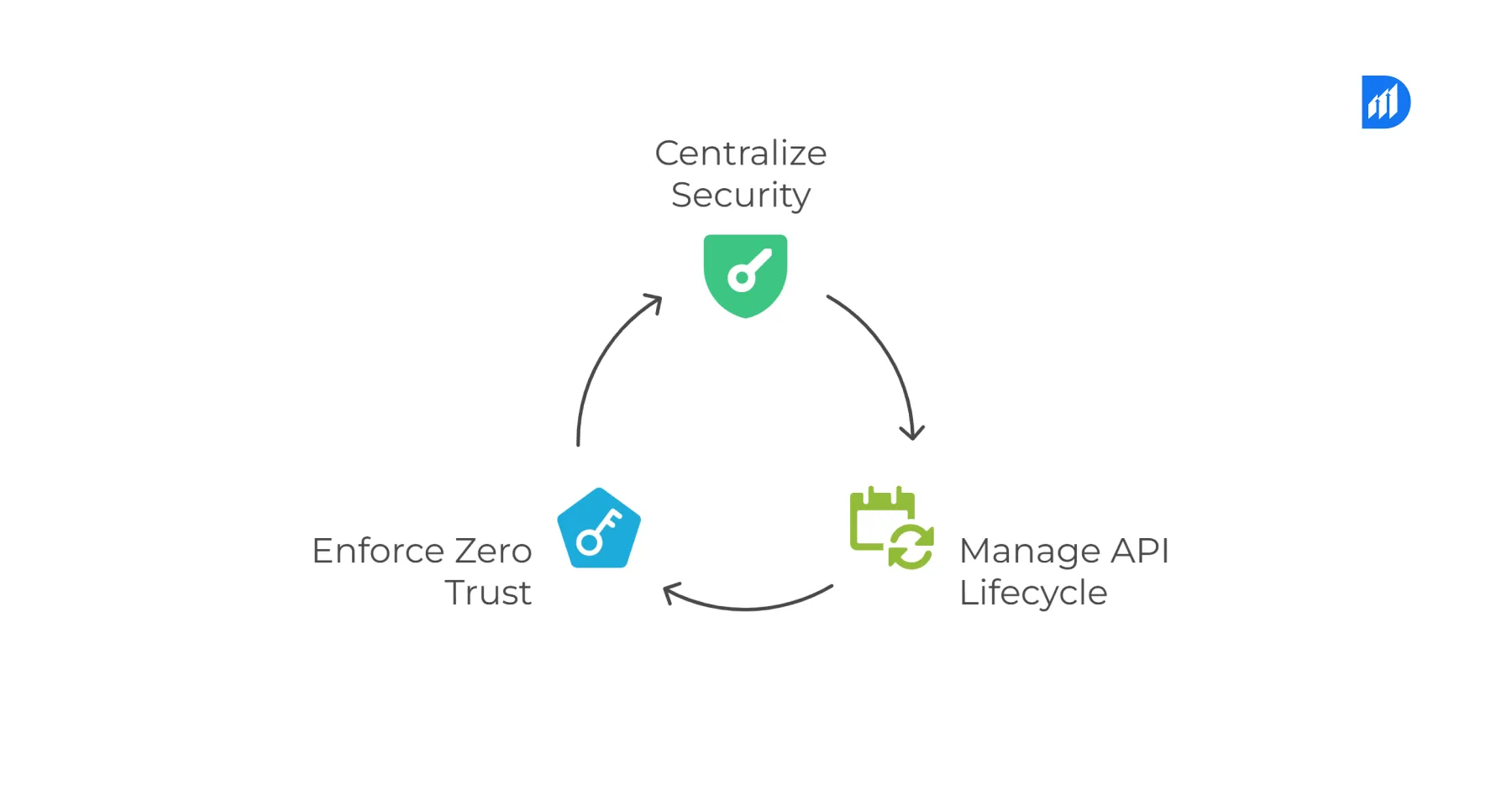
Introduction: The Unskippable API Security Reality Check
You woke up this morning, scrolled LinkedIn, and saw yet another breach headline. That’s your sign: Azure API Security is no longer a maybe, it’s your must-have. From data leaks to zombie APIs haunting your cloud estate, attackers are getting creative and your APIs are the new open window. No FOMO here, just fear of being front page news for the wrong reasons.
You don’t need to be a cybersecurity black belt to know this: Enterprises can’t afford to expose their APIs, customer logins, payment endpoints, internal data lakes, to anonymous digital traffic. “Ship it and secure later” is not a vibe; it’s an incident ticket waiting to happen.
Here’s what you’ll get from this guide:
- What is Azure API Management (APIM) and why you need it.
- Why OAuth 2.0 matters for API authentication in Azure.
- How Azure AD B2C powers API authorization and identity management.
- Hands-on tips for how to secure REST APIs in Azure step by step.
- Use cases and real-business context (minus the eye-glazing jargon).
- Working internal/external links for deeper dives, promise, all actually work.
Cloud API Security Problem: Why It Hurts
Raise your hand if you’ve ever:
- Deployed an API without a gateway and just hoped the dev gods had your back.
- Reused the same API key in prod, dev, and…yeah, test.
- Got lost in the maze of legacy authentication and siloed user identities.
Don’t beat yourself up. According to industry reports, 75%+ of cloud security incidents start with an API misconfiguration. Modern digital businesses, banks, retailers, even public sector, run on APIs that stitch together everything from customer apps to backend processing workflows. One weak endpoint, a missing token validation, and suddenly your “innovation” is a headline.

- You need a gatekeeper: APIs are attack central. Bots, fraudsters, and ex-employees love an open door.
- You need identity management: Not everyone who finds your API should get a seat at the table.
- You need consistent API authentication: Cookie-cutter security never scaled, and new policies every sprint will break your sanity.
As cloud-native apps multiply, API gateways and identity management aren’t just “technical features.” They’re your new insurance policy.
Meet Your Shield: Azure API Management
Welcome to the squad, Azure API Management is your all-in-one cloud API gateway and security framework. It’s like having the world’s pickiest bouncer at your club, inspecting every API guest at the door.
What Is Azure API Management (APIM)?

Azure API Management sits between your users and backend services, enforcing policies (rate-limiting, quota, network rules), acting as a security shield and traffic cop, all while making your developer teams’ lives easier.
| Feature | Details |
| Cloud API gateway | Unified layer for all APIs |
| Centralized security | OAuth2, API keys, Azure AD, certificates |
| Token validation | Built-in policies |
| Traffic control | Rate limiting, quotas, IP filtering |
| Analytics & monitoring | Usage analytics, logging, tracing |
| Developer portal | Self-service docs, try-it tools |
Resource:
Why It Matters

- Centralizes security: No more hand-coding tokens in every microservice.
- API lifecycle management: Publishing, versioning, retiring, all in one pane.
- Zero trust ready: Enforce modern trust boundaries without bottlenecking your pipelines.
How OAuth 2.0 Powers API Authentication in Azure
Let’s talk about trust. You don’t let just anyone into your house, right? OAuth 2.0 is like your smart video doorbell, issues secure access tokens only to trusted guests, validates who they are, and even lets you revoke the invite if they act shady.
What Is OAuth 2.0…For Humans?
- Industry-standard protocol for delegated authorization.
- Apps don’t see user passwords; they get scoped tokens instead.
- Uses access tokens (usually JWT-based) that APIs can validate.
Why Implement OAuth 2.0 with Azure API Management?
- Avoids security anti-patterns: No more “secret=12345” in querystrings.
- Fits hybrid cloud setups: Works across different identity providers.
- Painless token validation: APIM natively checks token validity and scopes.
Resource:
OAuth2: The 2-Minute Walkthrough
- User/Client needs resource (API).
- API Management checks: “Do you have a valid access token?”
- If yes: Token is validated; claims and permissions are checked.
- API executes only if the token passes muster.
- If no: Error. Go (securely) get yourself a token.
Using Azure AD B2C for API Access Control
Azure AD B2C is Microsoft’s pluggable identity management for consumer-facing or external apps, think: multi-brand portals, customer APIs, external partner connections.
Why Use Azure AD B2C for APIs?
- Identity management for millions of users, not just employees.
- Custom login experiences (social providers, phone, OTP, etc.).
- Integrates with OAuth 2.0 for seamless API authentication and API authorization.
- Token validation out of the box (no more decoding, signature verification nightmares).
Resource:
How It Works (Life of an API Call with Azure AD B2C)
- User logs in via B2C (customized/branded, even Google/Facebook/OTP).
- B2C issues access token with relevant claims.
- Client includes token in “Authorization: Bearer {token}” header.
- APIM validates the token (“Is it still valid? Scope matches?”)
- If all’s good, API call is processed. If not, error city.
Step-by-Step: How to Secure REST APIs in Azure
Feeling lost? Here’s your easy checklist for robust Azure API security, no hand-waving, just doable steps.
1. Set Up Azure API Management
- Create an APIM Instance
- Import/open your REST APIs (OpenAPI/Swagger, HTTP, SOAP).
2. Register Your API in Azure AD B2C
- Register the API + App in Azure B2C portal
- Set up user flows/policies for sign-up, sign-in, profile management.
3. Configure OAuth 2.0 Authorization Server in APIM
- Define the OAuth 2.0 details (issuer URL, client IDs, token endpoints).
- Use the APIM developer portal to expose token operations.
4. Protect API Operations
- In the APIM “Inbound policy” editor, add the validate-jwt policy.
- Point it to your B2C config (well-known OpenID endpoint, audience, issuer).
5. Test End-to-End
- Try a request without an access token: you’ll get 401 Unauthorized.
- Authenticate via B2C (or delegated auth flow); obtain access token.
- Retry with the Bearer token: if you see your API response, congrats!
Need a how-to with visuals?
- Protect APIs with OAuth 2.0 in Azure API Management (Microsoft Docs)
- Durapid | Step-by-Step API Modernization
Technical Specs & Key Features
Azure API Management, OAuth 2.0, and AD B2C together form a battle-tested, cloud API gateway with comprehensive security controls. Here’s what the architecture looks like under the hood:
Core Capabilities
- Centralized API gateway with layered security.
- Policy-driven authentication, OAuth2, JWT, API keys, certificates.
- Fine-grained API authorization at the operation or route level.
- Automated token validation and scoping.
- Continuous monitoring & analytics, latency, errors, traffic spikes.
- Identity federation, Google, Facebook, local, custom SSO.
- Network controls, IP filtering, private endpoints, VNET support.
What It Means for You
- Zero-trust ready out of the box.
- Consistent developer experience, docs, try API, auto-provision secrets.
- Compliance cloud, logs, audits, brute-force watch.
- Flexible scaling: from tiny pilot to mega-scale retail.
Explore more on Azure features:
Common Security Pitfalls and How to Dodge Them
Welcome to “Stuff I wish I knew before that 2am critical incident” section.
Top Mistakes (And How to Avoid Them)
- Exposing APIs without a gateway
Fix: Always front APIs with APIM, period. - Skipping token validation on backend
Fix: Use the validate-jwt policy; don’t just trust a header. - Using outdated protocols or ciphers
Fix: Enforce HTTPS everywhere. - Giving broad API access rights (wildcard scopes)
Fix: Apply least-privilege principle in OAuth2 scopes. - Stale secrets, app registrations, zombie users
Fix: Regularly audit app configs and secrets (use Azure Policy or Defender for Cloud). - Lack of monitoring and logging
Fix: Enable APIM insights, trace logs, and anomaly detection.
Want a safety net?
FAQ – Practical Answers You Actually Need
How to Secure REST APIs in Azure?
Answer:
Use Azure API Management as your front-door and enforce token validation via OAuth2.0 (preferably with Azure AD B2C for external/federated identities). Set strict API authorization (scopes/policies) and monitor every endpoint.
Implementing OAuth 2.0 with Azure API Management, Is It Really Plug-and-Play?
Answer:
Yes, APIM makes it drag-and-drop (almost). You’ll define your identity provider, attach the validate-jwt policy, and configure operations to require valid tokens. The process is wizard-driven, and you can always fallback on built-in developer docs.
Azure AD B2C for API Access Control: Who Needs It?
Answer:
Any org serving customers, partners, or communities outside corporate AD. If your API is being accessed by user pools beyond your employees, B2C gives you the right tools for identity management and experience customization.
What About Token Validation? Is It Automatic?
Answer:
If you configure policies correctly in APIM, yes. The APIM gateway handles token validation (signature, scope/claims, issuer/audience checks) before the request even hits your backend service.
Explore more:
Key Takeaways & Future-Proofing Your Stack
Here’s your sticky note summary:
- Azure API Security isn’t optional, it’s your business guardrail.
- Azure API Management centralizes and scales your security enforcement.
- OAuth 2.0 ensures secure, delegated API access using strong identity standards.
- Azure AD B2C supercharges your identity management for customer/partner users with smooth API authorization and seamless user experience.
- Token validation at the gateway: no more “DIY security spaghetti.”
- Everything is monitored. Everything logged. No drama.
Want to see more modernization and security guides?
Ready to Secure Your APIs?
You’re done reading, now let’s make your APIs hacker-proof and future-ready.
Start a free consultation with Durapid’s Azure security & API experts and let’s build an airtight, scalable API gateway with Azure API Management, OAuth 2.0, and Azure AD B2C. Don’t wait for the next “oops” moment, get proactive.
Contact Our Azure API Pros
- Questions?
- Want a personal walkthrough?
- Need help with identity management integrations or want to discuss cloud migration?
Connect with the Durapid team here, we’ll help you audit, architect, and automate your Azure API security strategy.
P.S.: Every enterprise hit by a breach once thought “it won’t be us.” Don’t let that be your line. Secure it, monitor it, and sleep easy. If you want more actionable tech how-tos, subscribe to our updates at Durapid!